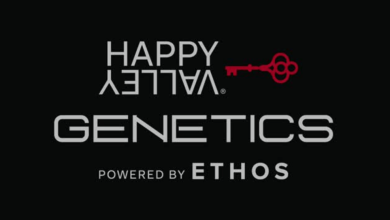In My Prison, We Pay for College on 70 Cents a Day – Ganjactivist.com

I never thought higher education was for me. Still, I decided to try college at the age of 38. I had not been in school for nearly 20 years, and there was a mountain of procedural hurdles to overcome. I managed, however, and was able to get my first year of college fully funded through federal student aid, including a Pell Grant.
I enrolled at a state college to study media and journalism. After three semesters and a summer session, I earned a respectable GPA and a place on the chancellor’s and dean’s lists.
In May 2010, shortly after taking a final exam, I had a few drinks at lunch to celebrate. Within 16 hours I was arrested. Three months later, I marked my 40th birthday behind bars. A two-year stay in county jail followed, along with a trial that culminated in an 80-year minimum sentence as a first-time offender.
My life had changed drastically, but I still desired an education. I soon discovered that college programs in North Carolina prisons were few and far between. Offerings were either unaccredited or restricted to people with less than 10 years to serve on their sentence. Options were limited to correspondence classes, which I could pay for myself, with prices between $500 to $1,000 per three credit hours. It would take about 120 credit hours to complete a degree.
The transformative potential of education while incarcerated is widely recognized. Research demonstrates that pursuing education, and especially earning a degree, substantially reduces the likelihood of returning to prison. A study from the Rand Corporation details how any type of participation among incarcerated individuals in a prison education program lowers the risk of recidivism and increases the odds of getting employment once released.
The positive impacts extend beyond the incarcerated individual. Education helps provide safer prison environments. Even the economy benefits, as decreased recidivism saves taxpayers money, according to the Center for American Progress.
Still, higher education in our prisons remains elusive at best.
In 2015, I arrived at a prison camp where there were no post-secondary educational opportunities. There was, however, an environment that fostered the learning of a craft. In my case, that craft was writing. I landed a journalist position at one of the few prison newspapers in the country, The Nash News.
Published four times a year, The Nash News is conceived, designed and produced entirely by incarcerated men at Nash Correctional Institution. Within a few years I became an assistant editor.
In 2017, the prison and The College at Southeastern, part of Wake Forest University’s Southeastern Baptist Theological Seminary, established a four-year seminary program at the prison. This offered a chance to earn a bachelor’s degree in pastoral ministry. Although that field was not where my heart was set, I applied. But despite my academic history, I was not accepted.
I still sought higher education, and my desire to study journalism was now rooted in a greater purpose. The U.S. incarcerated population has long been overlooked. The importance of prison journalism is now greater than ever and, with the tides of public opinion changing, there are more outlets that publish the works of incarcerated writers.
In 2020, I received word from a pen pal that Pell Grants would be reinstated for the incarcerated across the board. This officially went into effect in the summer of 2023. I was elated, yet I soon encountered a mountain of procedural hurdles. I knew the process to get federal student aid, so I immediately submitted a Free Application for Federal Student Aid, or FAFSA. But the process to get grant money for education would prove more complicated.
Months later, I received my Student Aid Report and learned that my college loans from 10 years prior were in default. The Federal Student Aid office said I may be eligible for assistance, but I would first need to rehabilitate my outstanding loans. Despite earning a mere 70 cents per day as a prison groundskeeper, I established a payment plan of $5 per month. In nine months, my account returned to good standing.
But I soon learned that the processes and regulations governing Pell Grants would still make it hard for me to take college classes.
Obtaining Pell Grant funding is most often the result of being in the right place at the right time. That’s because the current rollout of Pell Grants only reaches a small fraction of the nation’s prisons.
Only an established prison education program at a correctional institution is eligible to receive Pell Grant funding, under U.S. Department of Education rules. These programs must be initiated by a college or university and approved by the federal government. Schools must designate the specific prison camp as a secondary extension of their main campus, and incarcerated students can only constitute a certain percentage of a college’s student body.
Despite well-intentioned aims, these regulations limit the nationwide distribution of Pell Grants, hindering many incarcerated individuals from accessing life-changing education.
And while federal regulations assert that Pell Grants should be accessible to any incarcerated person without regard to length of sentence or nature of conviction, individual prison camps and PEPs can impose their own limitations. For instance, in North Carolina, a program offered at Sampson Correctional Institution by Campbell University requires students to have from 5 to 12 years remaining on their sentence.
Additional statistics recorded by the Vera Institute for Justice indicate discrimination may also influence Pell Grant availability. In its review of an Obama-era policy called Second Chance Pell, which provided funding for students in select prison education programs throughout the country, the think tank found that Black and Latino students were underrepresented in these programs, while white students were overrepresented.
One of the most significant regulatory flaws with the Pell Grant is the secondary location mandate, which affects Pell Grant accessibility for correspondence programs. For example, Adams State University in Colorado already has one of the few paper-based degree programs easily available to incarcerated people around the country, with costs at about $600 per three credit hours.
However, Pell Grant funding is not possible for this program because Adams State would need to classify every prison with students enrolled as an approved secondary location. Adams State has slowly integrated some of the prisons in Colorado, but they say semi-national expansion could take 10 years or more.
I will continue to seek education and hopefully one day earn a degree with a focus in journalism. I’ll continue to pay $5 per month on my old student loans, continue to write for both prison and web publications, and advocate for regulations that make Pell Grants — and higher education generally — more accessible to incarcerated people.
This article first appeared on Prison Journalism Project and is republished here under a Creative Commons license.



